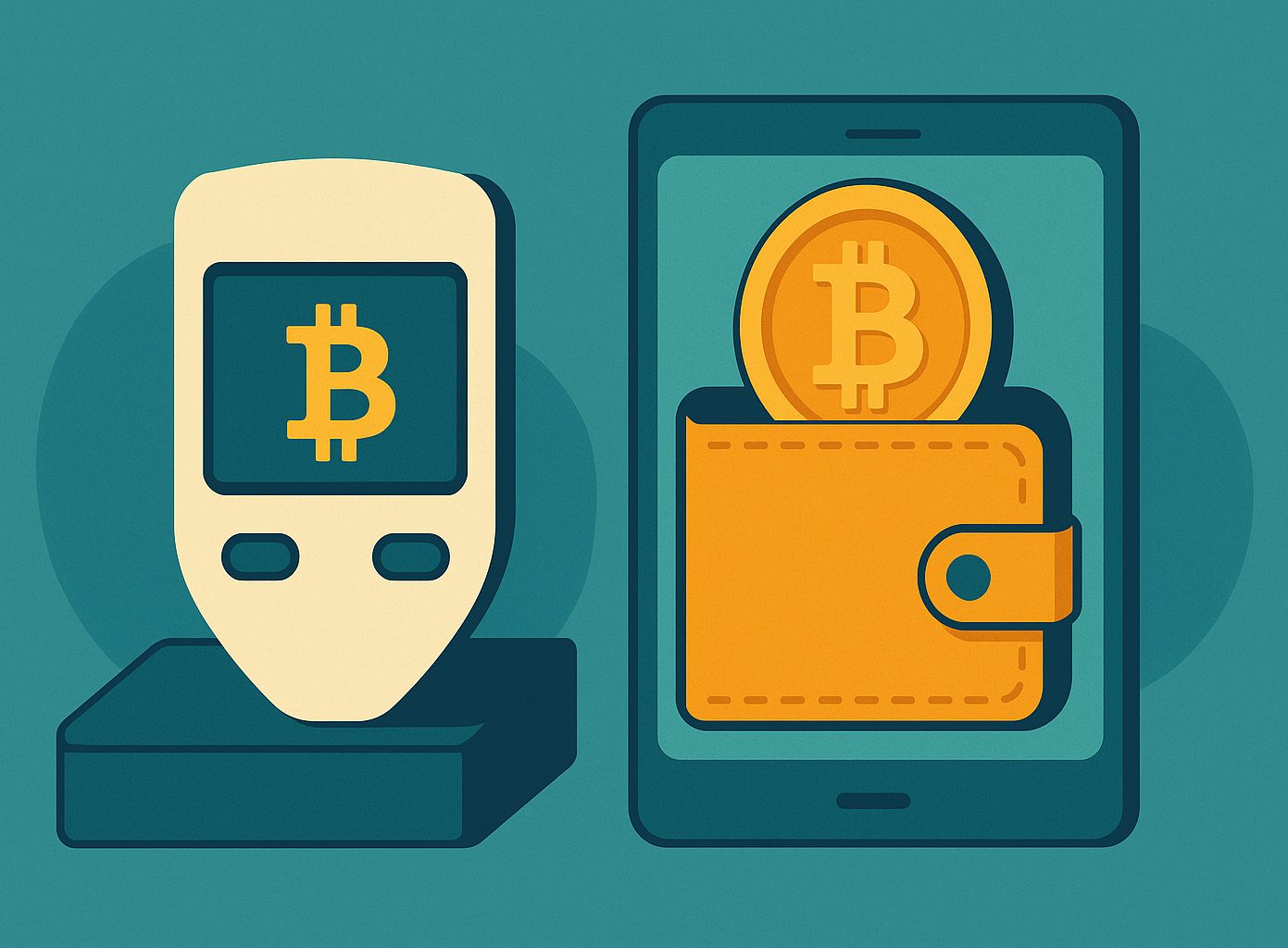Overcoming the Wallet Dilemma
In the dynamic world of initial coin offerings (ICOs), selecting the right wallet to safeguard and transact your digital assets is akin to choosing the perfect vault for your most treasured valuables. The debate between cold wallets and hot wallets has evolved into a central conversation among both seasoned cryptocurrency enthusiasts and newcomers eager to participate in ICO contributions. By weighing the unique security features, convenience factors, and compatibility requirements of each wallet type, investors can make informed decisions that align with their risk tolerance, investment strategy, and user experience preferences. In this exploration, we dive deep into the mechanics behind cold and hot wallets, illuminating how each option can enhance or compromise the safety and accessibility of your ICO investments. Understanding these nuances not only fortifies your digital holdings but also empowers you to navigate the ICO landscape with confidence and clarity.
The Anatomy of Hot Wallets
Hot wallets exist at the intersection of immediacy and connectivity. As software solutions that reside on internet-connected devices—be it smartphones, desktop computers, or web-based platforms—hot wallets facilitate rapid transactions and seamless integration with decentralized applications. Their allure stems largely from convenience: with just a few taps or clicks, users can execute ICO contributions, manage multiple tokens, and monitor real-time balances. Many popular hot wallets also provide fertile ground for interacting with decentralized exchanges and automated market makers, streamlining the process of swapping one token for another during or after an ICO. However, this constant connectivity to the web makes hot wallets inherently more vulnerable to cyber threats such as phishing attacks, malware intrusion, and unauthorized remote access. Consequently, when you’re pondering whether a hot wallet is best for ICO contributions, you must reconcile the desire for speed and flexibility with the ever-present risk of digital compromise.
Diving into Cold Wallet Technology
Cold wallets represent the epitome of offline security in the crypto sphere. By design, these devices or paper-based solutions isolate private keys from internet exposure, effectively rendering them immune to many forms of online exploitation. Common cold wallet formats include hardware wallets—compact USB devices specifically engineered for secure key storage—and paper wallets, which involve printing key pairs on physical media. During the ICO contribution process, a cold wallet may seem cumbersome, given the extra steps required to transfer tokens offline and later broadcast transactions. Yet for significant investments or long-term token holdings, the peace of mind afforded by cold wallet storage is unparalleled. By keeping private keys air-gapped and physically controlled, cold wallets safeguard investor assets from remote hackers, server breaches, and an ever-growing arsenal of cyber threats. When evaluating the best medium for ICO contributions, it’s essential to weigh the streamlined user experience of hot wallets against the rock-solid security foundation provided by cold storage.
Security Showdown: Hot vs Cold
When dissecting the security paradigms of hot and cold wallets, it’s clear that each model embodies a distinct approach to managing private keys. Hot wallets, tethered to the internet, rely heavily on robust encryption algorithms, multi-factor authentication, and continuous software updates to mitigate vulnerabilities. Yet even the most sophisticated hot wallet cannot fully eliminate the risk of remote attacks. Phishing attempts, malicious browser extensions, and server-side breaches pose genuine threats to asset safety. Cold wallets, in contrast, leverage physical isolation as their core defense mechanism. By storing private keys in a tamper-resistant hardware environment or on offline paper media, cold wallets virtually eliminate attack vectors that require network access. However, physical security challenges such as loss, theft, or damage also loom large. Without proper custody solutions—such as secure safes or trusted custodians—cold wallets can become inaccessible. Ultimately, the security showdown hinges on striking a balance: determining whether the convenience and immediacy of hot wallets outweigh the offline fortification of cold storage for your ICO contribution needs.
Convenience and Accessibility Factors
User experience forms a critical axis in the cold versus hot wallet debate, particularly for those eager to capitalize on time-sensitive ICO opportunities. Hot wallets excel in accessibility. Whether you’re subscribing to an ICO through a web interface or interacting with a smart contract via a mobile application, hot wallets facilitate seamless communication with blockchain networks. Instant transaction broadcasts, real-time token monitoring, and integrated swap features underscore the undeniable benefits of connectivity. Cold wallets, while secure, introduce procedural steps that may slow down the contribution process. To participate in an ICO, an investor must first sign transactions offline, connect the cold device momentarily to a computer or mobile interface, and then broadcast the signed transaction online. Although such steps only add a few minutes per transaction, in highly competitive token sales where timing is paramount, these extra moments can make a significant difference. Savvy investors often employ a hybrid approach: maintaining the bulk of their holdings in cold storage while leveraging hot wallets for rapid ICO contributions and subsequent token trades.
The ICO Contribution Journey
ICO contributions typically unfold in stages: from pre-sale registration and KYC (Know Your Customer) verification to the final token distribution and wallet reconciliation. During pre-sale phases, investors often lock in advantageous token prices but must comply with identity verification and accreditation checks. Hot wallets, with their integration into KYC-friendly platforms, streamline this onboarding process by swiftly connecting to verified user accounts and simplifying transaction signing. Once the sale begins, gas price management and transaction speed become crucial. Hot wallets empower investors to adjust network fees on the fly, optimizing confirmation times on congested networks. Conversely, cold wallets demand more precise gas fee estimation in advance, as the offline signing process complicates last-minute fee adjustments. After tokens are distributed, investors face the delicate task of transferring large balances to cold storage. At this juncture, cold wallets shine by providing a secure sanctuary for long-term holdings. Understanding each stage of the ICO journey—and how wallet types influence the process—enables contributors to maximize both security and efficiency.
Risk Management Strategies
Mitigating risks during ICO contributions transcends the choice between cold and hot wallets. Investors must adopt multi-layered strategies to safeguard their assets throughout the token sale lifecycle. For hot wallets, implementing strong passwords, enabling two-factor authentication, and regularly updating software are non-negotiable practices. Integrating wallet addresses into white-listed recipient lists—when supported—further reduces the risk of sending tokens to malicious addresses. On the cold wallet front, rigorous physical custody measures are imperative. Storing hardware wallets in secure safes or safety deposit boxes, creating multiple paper wallet backups in geographically diverse locations, and employing tamper-evident storage pouches can prevent loss and unauthorized access. Moreover, investors should test their recovery procedures well in advance of the ICO, ensuring they can restore wallet access swiftly if needed. By combining the strengths of both wallet types—utilizing hot wallets for transaction agility and cold wallets for preservation—investors can navigate ICO contributions with a robust risk management framework.
Best Practices for Storing ICO Tokens
Securing ICO tokens extends beyond the immediate contribution phase. Once tokens arrive in your wallet—hot or cold—the imperative is to implement best practices for storage, backup, and periodic review. In hot wallets, diversifying across multiple platforms can reduce single-point-of-failure risks, while hardware wallet integrations offer an additional layer of security. Conversely, when housing tokens offline, it’s essential to verify the integrity and authenticity of the cold storage device. Firmware updates for hardware wallets should only be sourced from official vendor channels, and paper wallet prints should be free from ink smudges or fading. Investors must also plan for emergency scenarios, such as device malfunction or personal health crises, by establishing trusted custodians for recovery credentials. Engaging in routine wallet audits—confirming that private keys remain intact and that wallet addresses align with expected holdings—fosters long-term security and confidence. Through disciplined adherence to these best practices, ICO contributors ensure that their digital assets remain protected well beyond the initial sale.
Choosing Your Ideal Wallet Pair
Given the complementary benefits of cold and hot wallets, many investors opt for a dual-wallet strategy that leverages the strengths of both systems. This hybrid approach entails maintaining a primary cold wallet for the bulk of token holdings while allocating a smaller hot wallet portfolio specifically reserved for ICO contributions, quick trades, and day-to-day interactions. By segmenting assets in this way, investors minimize exposure to online threats without sacrificing transactional flexibility. When selecting a cold wallet for long-term storage, factors such as vendor reputation, open-source firmware, and community reviews should guide your decision. For hot wallets, prioritize platforms with sleek user interfaces, robust security features, and active development roadmaps. Compatibility with multiple blockchain networks—particularly those hosting your target ICO—ensures smooth participation and reduces the likelihood of technical hiccups. Ultimately, by pairing the strategic advantages of cold and hot wallets, ICO contributors can optimize both security and efficiency, crafting a cohesive digital asset management ecosystem.
Sealing the Deal With Confidence
Embarking on an ICO contribution journey demands a thoughtful wallet strategy that aligns with your individual goals, risk tolerance, and technical comfort level. Whether you gravitate toward the unmatched security of cold wallets or the lightning-fast convenience of hot wallets, the key lies in understanding the trade-offs and orchestrating a balanced approach. By integrating disciplined risk management practices, adhering to robust storage protocols, and staying abreast of evolving wallet technologies, you position yourself to navigate ICO contributions with unwavering confidence. As the blockchain landscape continues to mature, the symbiotic relationship between cold and hot wallets will remain a cornerstone of digital asset stewardship—empowering investors to seize emerging opportunities while keeping their tokens secure. Choose your wallet wisely, prepare meticulously, and let your ICO investments flourish under the protective umbrella of a well-designed wallet ecosystem.




